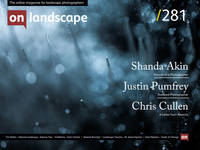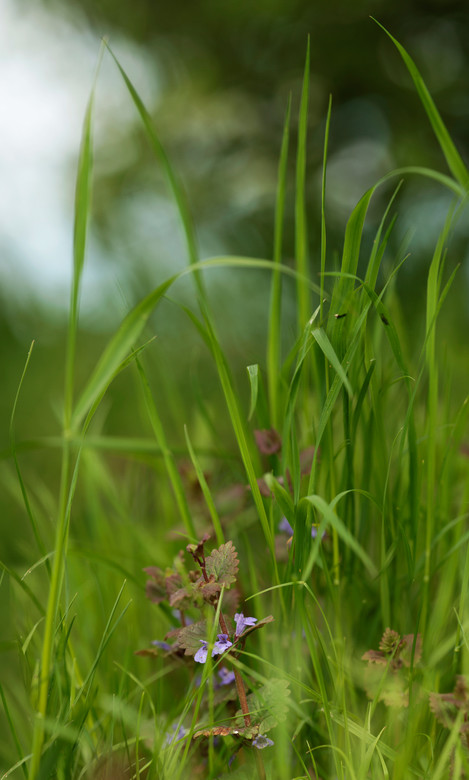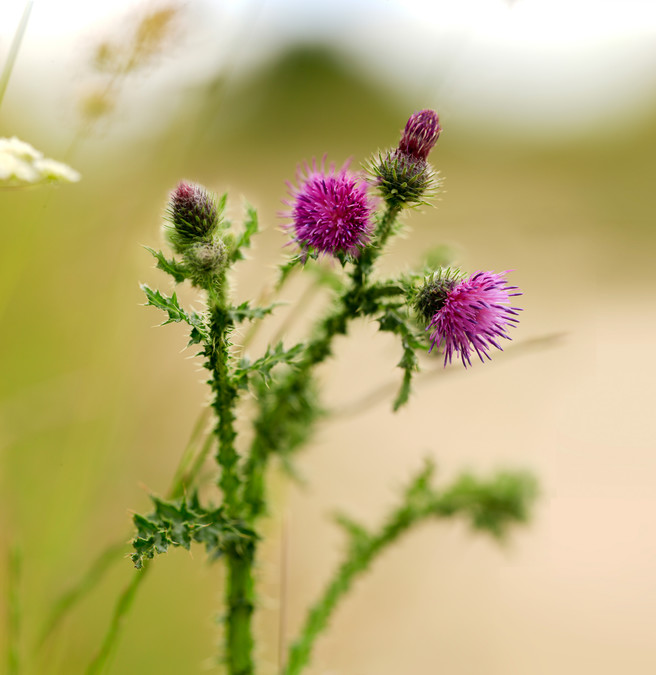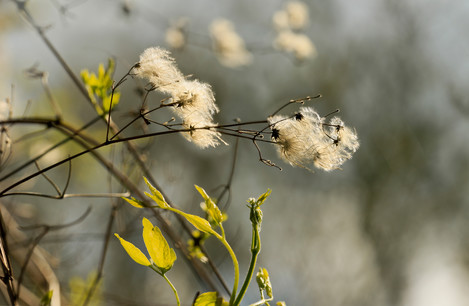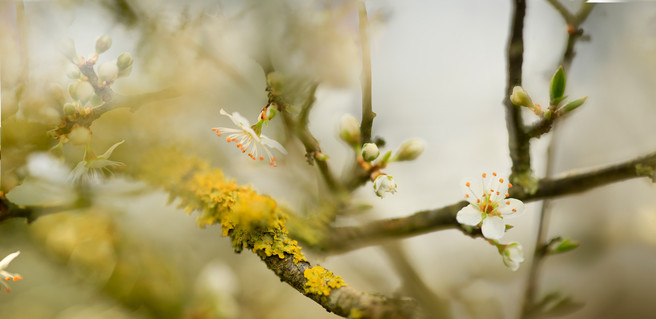Exploring unusual aspects connected to seeds

Clare Newton
In 2001 Clare Newton was awarded the British Female Inventor of the Year, with 5 international awards for innovation.
Born in Chelsea, Clare’s creative talents started at a young age, first painting her bedroom with Santa’s gift of oil paints - to building wooden aeroplanes. But she was given her first camera, a little Minolta at the age of 14, it inspired her to build a dark room in the roof of her parents house. Here, she taught herself how to shoot and develop photographs, with neighbours encouraging her with little commissions.
Clare took a degree in graphics in East London and worked as a Graphic designer for many years. Photography really took off for her when the Olympics came to London and she made her first large photographic installation in 2009, called ‘Riches Uncovered’. This was a collection of photographic montages to explain and document East London’s disappearing heritage. It was opened in June by the Chairman of City Corporation’s West Ham Park, Honourable Stella Currie.
I have often wondered about the miracles of a seed - how can such a tiny speck grow into the most incredible flora, from a small daisy all the way up to a giant tree?
Hello, my name is Clare Newton. I am a photographic artist from East London. I create long-term projects in which I can totally immerse myself in the subject, and meet incredible specialists, scientists, and people connected to the subject I want to research. I enjoy spending time with them, learning about what they do, and then photographing and recording their scenarios, from which I can make a visual story from.
This project about seeds came from my quizzical enjoyment of nature. Each year I spend time camping on my own in my ‘hermitage’. A small 18th century Granary stuck in the middle of nowhere with nothing but 13 amps of power and freshwater... that’s it! The experience totally immerses me in nature - making me become aware of my senses again; - smell, touch, light, shadows, patterns and fragility.
Living in the city, everything becomes dumbed down - the smell is so awful I have to stop using my senses. It is tragic, but it affects the way I think creatively too. I long to go on holiday, but the lack of employment prevents me, so I have to keep functioning and pushing my talents and abilities to perform at their absolute best. Then I do my utmost to make something happen so the work can be put to good use and benefit a great many people.
I am not from a horticultural background, but I love being in nature and discovering new subjects to learn about things that aren’t connected to my everyday life, then finding ways to share what I have learnt with the public. Many years ago, I was a volunteer for a special needs school. I found they had very few opportunities to get out and experience non-curriculum subjects. Since then, I have made it my ambition to reach out to people from all walks of life and bring something they may not know about.
What’s so special about seeds?
A few years back, while camping at my annual artist’s hermitage in South England, I became fascinated by the thistle, its beautiful canopy that burst open and released a flight of seeds. How this prickly plant, so despised, still manages to survive the onslaught of a gardener's poison, a farmer’s weed control and other forms of destruction (what is so sad to find out is that this plant, above all others, is essential to the survival of bees and critical pollinators).
Inspired by this thought, I started collecting some thistle seeds and watched how they would capture the tiniest amount of airflow to lift them up and away to their next destination. This led me to become aware of how similar the dandelion is. Paying closer attention, I found that many flowers appeared to look the same but actually had a range of differences which I could photograph. I questioned myself, not knowing that both plants were, in fact, from the same greater family of Asteraceaes. What surprised me the most was when I discovered a decorative artichoke planted in a cathedral’s garden was closely related to the thistle. It never occurred to me that it was, in fact, the edible plant we see in greengrocers that is a giant thistle. It has the same overlapping fish scale patterns, a bright tuft of purple petals on top, and, when ripe, will release a flurry of furry seeds, each catching a breath of air to spread this happy family of plants.
I think there are so many aspects we take for granted and don’t pay much attention to and thus lose our natural ability to see or question the little things in life that sit right under our noses or in photographer’s speaking... lenses.
Once back to civilisation, I started researching these two plants and came across an interesting piece of research by Edinburgh University. They, too, were interested in the flight of seeds and for their next project, they looked at pappus producing plants and testing their flight ability in order to find the most efficient flyers of all the pappus-based seeds and that being the dandelion.
Most pappus-based seeds have a round fluffy canopy with the seed tightly attached to the hair. The dandelion is sparing with its pappus as it only has a flat canopy with a long pendulum tail with the seed attached to that instead. It is remarkable, this provides stability in a variety of different wind strengths. The pendulum enables the canopy to stay at the top with the weight adjusting for direction and upward drawing effect. According to the initial research by a team based at Edinburgh University, Professor Viola found the dandelion's seed could fly four times more efficiently than a human-made parachute.
Just like science, photography, too, has to undergo a certain amount of experimentation. There is something magical with the light on pappus based seeds, but trying to capture something the eye sees and comprehends is a different matter. I mix the techniques of camerawork up to suit a situation sometimes, I crossover techniques I use in the studio, out in the field. The best light source in the world is bright sunshine. I really don’t get why so many photographers seem to curse it for its stark light and harsh shadows. I just move around a subject to avoid it! What to me is so logical is that DSLR’s are programmed to work at their best using direct sunlight - all the colours and sharpness happen when the camera has everything it needs to make an intense rendering. The sun is beautiful to work with, but my!
One does have to pay attention to time - as, unlike a studio set up, where light is fixed, the sun lengthens and changes its K (kelvin colour temperature) rating - plus the added drawback is the inconsistent cloud cover, darting all over the place. The trick is not to see these factors as problems but work harmoniously with them in order to find the magic in making the image. It is all there - it is just a matter of tuning into the relationship between your camera and the environment.
From Biblical beginnings
I became fascinated with the story of how a 2,000-year-old date was discovered and miraculously germinated. I wanted to see if it was possible to find a fossilised seed without traipsing across an unknown desert or paying exorbitant amounts for something I didn’t really want to keep for long. To my amazement, I found I could purchase one for under a tenner. Okay, it might not be very big - but I was sure it would serve my purpose for this project.
What arrived in the post was a perfectly formed Horsetail Seed Pod (Equicalastrobus), from Morocco which dates to around 56 million years old. This idea took me on a new journey. I questioned: Is it possible for this seed to have any living descendants?
Apparently, yes! Although not at such a giant scale as the fossil - Horsetail (Equisetum arvense), often called mare's tail, does exist. But it comes with a great big warning sign when purchasing it for a garden. “garden public enemy number one. It looks like it belongs in Jurassic Park and if left unchecked, it will spread like wildfire. It produces spores, spreads from the roots, and even small pieces of root will grow into plants”, says Allotment Gardener. At this point, I backed down from my enterprising and inquisitive photographer’s hunger to take home to photograph. This became an interesting concept for me, as it is living proof of a plant’s success in adaptation to changing environments and, astonishingly, over millenniums.
On a previous visit to Manchester, I remembered there was a beautiful and comprehensive museum of nature. I called them up and asked if they could help me find out more about my fossil seed. I had a fascinating tour of the museum’s collection. Seeing first hand an old Herbarium which contains nearly a million species of plant and fungus from around the world and mainly collected by Victorian enthusiasts.
I have never before had an opportunity to see such a private collection not open to the public. With each room, I made a mental note of items I would like to photograph. In the furthest room lay a small box with narrow drawers. Inside were presented row upon row of microscope slides.
Each with a carefully preserved seed or slice of a seed. Each slide is decorated with gold embossed letters and patterns with a central window - an enamel ring framing the cover slip pressing its specimen to the flat glass base. At the end of each slide is a tiny label with copper plate writing, detailing the specimen’s Latin title.
My Fossil seed is a Horsetail Seed Pod Fossil (Equicalastrobus) from Morocco, dated approx 56 million years old. I searched the index boxes and located a similar set containing variations of the Horsetail; Horsetail plant (Equisetum Arvense) or in English: Horse Tail, Horse Willow. Further on my journey, I found that Britain has a rare living version of my fossil which is found in South Wales.
You can see what happens when research and ferreting around, so to speak, leads from one aspect to another. It just requires an open mind, full of questions, then to take those questions and make some interesting visual answers, in order to build on a story that can be shared.
I love how the camera and a passion take me on so many unexpected journeys, I just hate it when it all has to come to an end and I then need to get a little bit commercial so I can keep doing what I’m good at.
Seeds of Change Exhibition
Seed of Change covers six alternative areas of research connected to seeds. Each tells a story through a narrative of pictures and words. From small beginnings, the aim was for the display to grow and include some film footage and recorded interviews with many of the scientists.
The artist-photographer Clare Newton brings these stories to life with the art of photography in a new exhibition held at:
Gilbert White's House & Gardens
Opening Date: 06 Jun 23 until 28 Aug 23
The Wakes, High Street, Selborne, Hants GU34 3JH
Open daily, Tuesday to Sunday, 10:30am to 4:30pm
RHS Wisley - Talk on 11th July 2pm, Hilltop Live series of free talks, demonstrations and interactive sessions at RHS Garden Wisley, GU23 6QB.
This project is just coming live, the artist would like to make contact with venues who would love to exhibit the project.

